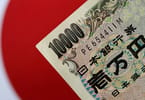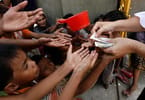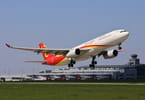The demand for chopsticks and chow mein is going to rise in South Asia! China’s globe-trotting tourists are arriving by the thousands. The just-concluded Chinese Lunar New Year holiday saw a surge in tourist arrivals from China in India and around India.
The National Tourism Administration of China predicts that Chinese tourists will make 51 million trips away from home this year — a seven per cent increase from 2009. And, they are not shy about spending their yuan.
These globe-trotters spent a staggering $42 billion overseas last year. This made China the fifth-highest travel spending country in the world. According to the UN’s World Tourism Organization, China will be the world’s fourth-largest source of outbound tourists by 2020, with 100 million Chinese tourists travelling abroad.
Red hot economy
The cause for this wanderlust has its roots in China’s scorching 8.7 per cent GDP growth, coupled with the relaxation of travel rules for Chinese citizens.
Not too long ago, Beijing had a firm clamp on the ability of its people to travel. The rules slowly relaxed and travel to Hong Kong, then Macau and Taiwan was allowed. Since the early 1990s, the Approved Destination Status (ADS) programme has evolved to include over 100 countries. Although MICE tourism – which relates to meetings, incentives, conventions and exhibitions (hence, the acronym) – will dominate foreign travel for a while, it is clear that more and more Chinese tourists are travelling to purchase that new Hermes bag, see exotic places and broaden their horizons.
With the increasing disposable income of the urban population and greater global exposure, Chinese tourists are geared up to explore the world. With all this money up for grabs, South Asian countries will have to work hard to woo Chinese tourists away from more popular destinations in Europe and the US.
Returning to more normal times last winter, Sri Lanka reported a 35 per cent rise in foreign tourists but over 70 per cent rise in Chinese tourist arrivals. Nepal saw an incredible 242.5 per cent increase in tourists from China, while the smallest South Asian island nation of Maldives recorded 40,000 tourist arrivals from China.
2010: An ‘Incredible India’ year
With Chinese tourists becoming a force to be reckoned with, South Asian countries are finding innovative ways to entice their visits and their wallets. In India, the Ministry of Tourism has launched the ‘Incredible India’ campaign in China. This offers holiday packages, travel itineraries and competitive airline and hotel prices.
China has also named 2010 the year of cultural exchange with India. While Bollywood movies are already popular among the Chinese, India can also export yoga and ayurveda to entice tourists.
India can also leverage the fact that the Commonwealth Games are happening in October to develop new destinations in rural, desert, adventure and eco-tourism.
Service, competition a problem
Yet, it is not all smooth sailing, according to Arvind Kumar, the GM of Trailblazer Tours. Having lived in China and worked closely with local travel agencies for a year, he laments at the lack of large tour operators. He says lack of competition results in Chinese tourists being offered low quality packages. Kumar gives the example of the popular Golden Triangle package – a tour of New Delhi, Jaipur and Agra – being sold for as little as $200. With such cheap packages, tourists visiting India are not given the best experience they can have.
He also says there is not enough awareness about what India can offer. Few local operators in China are well-versed with the diversity of food, the quality of hotels or the available infrastructure to build high-quality tour packages.
Sri Lanka is also looking towards China to boost its sinking tourism industry. The island nation has been affected by the global financial crisis and years of civil war. While Sri Lanka received only 9,000 Chinese tourists in 2009, this number is steadily rising.
The country is certain that China is the main target for inbound tourists. With this in mind, a number of measures to win the hearts of Chinese tourists have been put in place. The Sri Lankan Tourism Bureau set up a tourism office in Beijing in 2008. In 2009, the Sri Lankan embassy in China sent members of the media, travel writers and tour operators on familiarisation tours of Sri Lanka.
Sri Lankan Airlines recently offered a number of tour packages at the Chinese market. There are three direct flights from Beijing to Colombo and the airline staffs its flights to China with Chinese attendants.
While Sri Lanka has much to offer its Chinese tourists and is clearly fighting to get their attention, many are wary of the terrorist attacks in Colombo and worry about their safety.
Still, despite the unavoidable hiccups along the way, the influx of Chinese tourists to our part of the world is inevitable. It’s time India and its neighbours brush up their Mandarin, learn the phrase “Gong xi fa cai” (“Happy Chinese new year”) and welcome the onslaught with open arms.
WHAT TO TAKE AWAY FROM THIS ARTICLE:
- Although MICE tourism – which relates to meetings, incentives, conventions and exhibitions (hence, the acronym) – will dominate foreign travel for a while, it is clear that more and more Chinese tourists are travelling to purchase that new Hermes bag, see exotic places and broaden their horizons.
- Few local operators in China are well-versed with the diversity of food, the quality of hotels or the available infrastructure to build high-quality tour packages.
- With this in mind, a number of measures to win the hearts of Chinese tourists have been put in place.






















